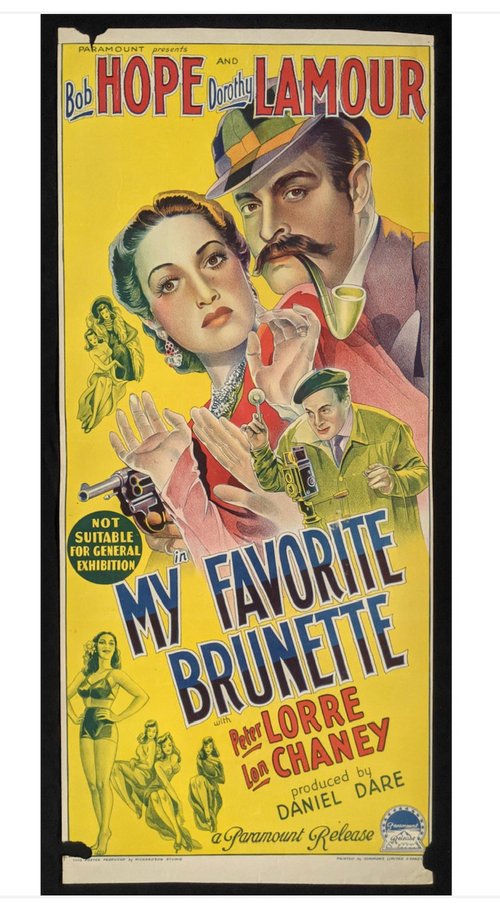
Welcome! The lobby of the Deranged L.A. Crimes theater is open! Grab a bucket of popcorn, some Milk Duds and a Coke and find a seat. Tonight’s feature is MY FAVORITE BRUNETTE, because every now and then we need a laugh. It is a film noir parody starring Bob Hope, Dorothy Lamour, Peter Lorre, and Lon Chaney–with Alan Ladd in a cameo role. There’s also a surprise cameo at the end.
TCM says:
In San Quentin prison, baby photographer and amateur detective Ronnie Jackson, awaiting execution for murder, tells the press the story of his demise: Ever aspiring to be a detective, Ronnie invents a keyhole camera lens and buys a gun, hoping to work for private detective Sam McCloud, whose office is across from Ronnie’s studio in San Francisco’s Chinatown. When Sam goes to Chicago, he leaves Ronnie behind to man the telephones, and Ronnie takes the case of Carlotta Montay, a beautiful brunette whose uncle, Baron Montay, is in trouble.
Enjoy the movie!




